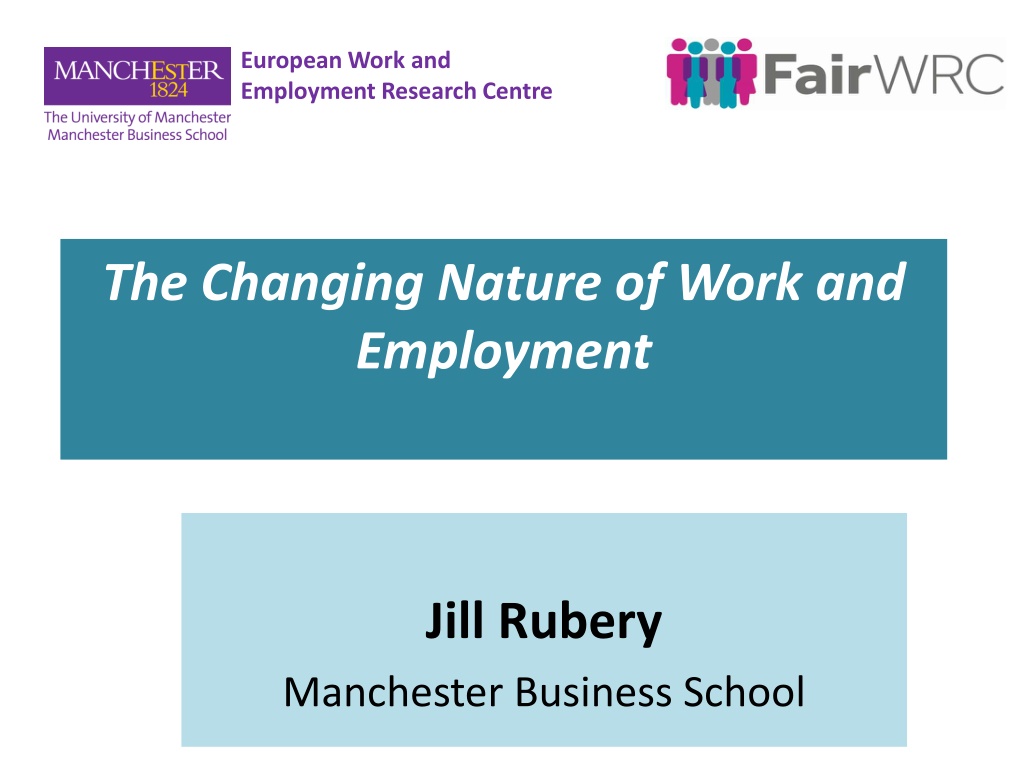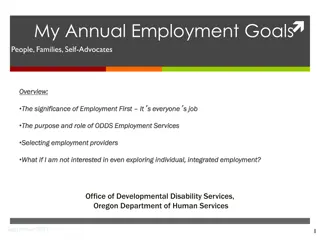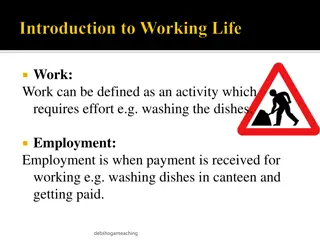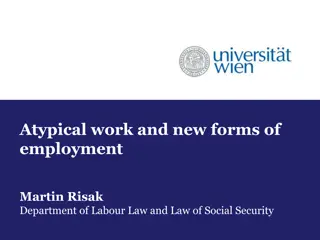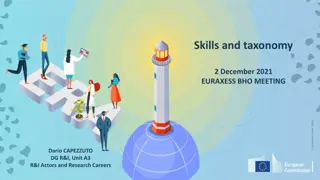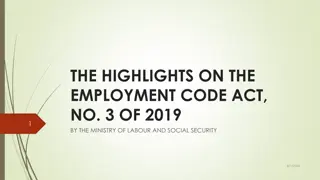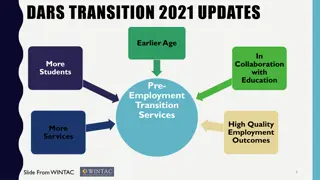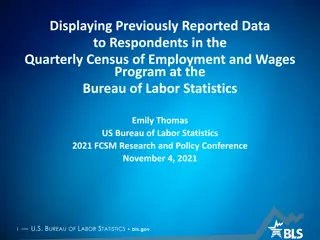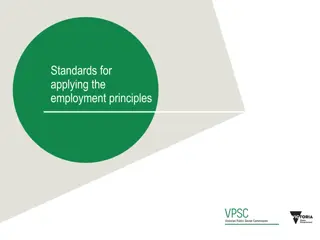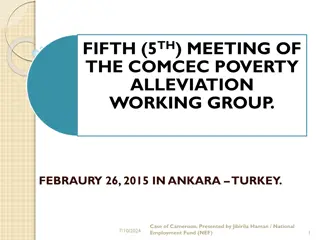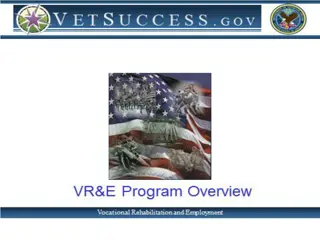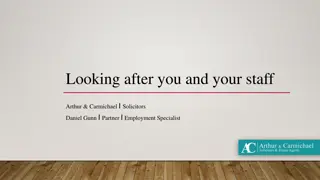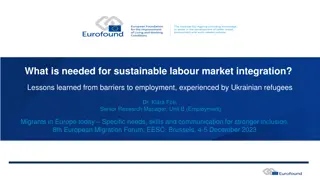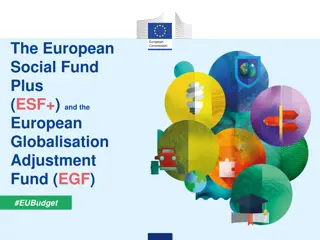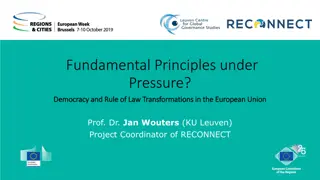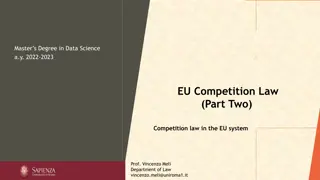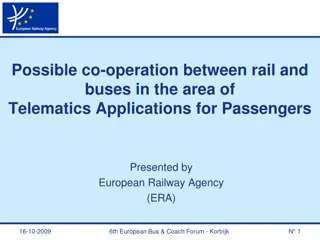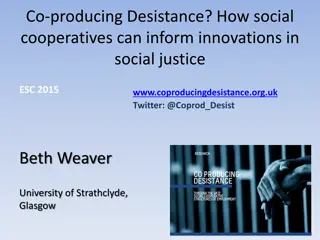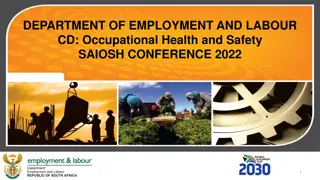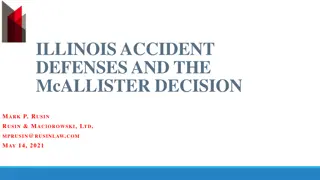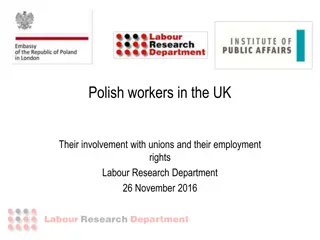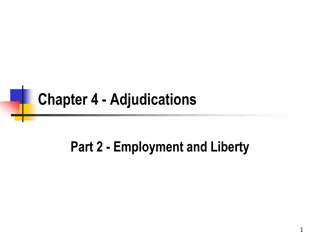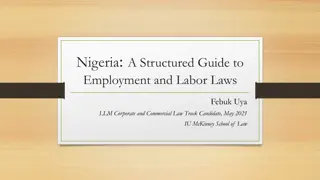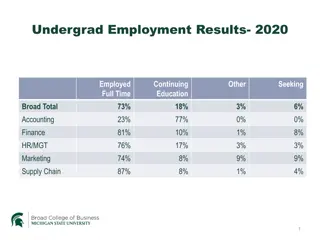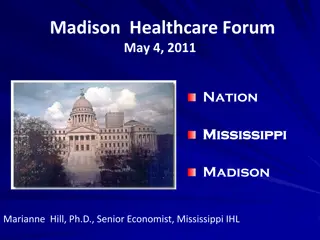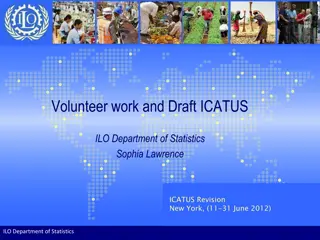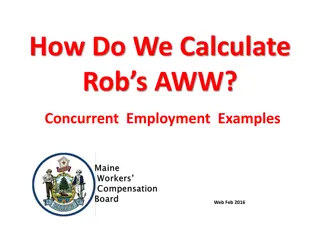The Changing Nature of Work and Employment: Insights from European Research
Explore the evolution in work dynamics, from the impact of feminisation to the emergence of flexibilisation in employment practices. Delve into historical milestones like the Ford car factory strike and the Contracts of Employment Act, shedding light on the transition towards gender equality and flexible work arrangements.
Download Presentation

Please find below an Image/Link to download the presentation.
The content on the website is provided AS IS for your information and personal use only. It may not be sold, licensed, or shared on other websites without obtaining consent from the author. Download presentation by click this link. If you encounter any issues during the download, it is possible that the publisher has removed the file from their server.
E N D
Presentation Transcript
European Work and Employment Research Centre The Changing Nature of Work and Employment Jill Rubery Manchester Business School
The Four Fs of Employment Change From mainly men to both men and women Who works Feminisation How we work From standard to flexible employment Flexibilisation For whom we work From single employer to multi-employers Fragmentation From producing goods/services to financial value What work is for Financialisation
50 years ago- beginnings of feminisation 1968 Women at the Ford car factory in Dagenham strike over equal pay, almost stopping production at all Ford UK plants. Their protest led directly to the passing of the Equal Pay Act.
Feminisation Share of women working 1964 to 2013 51% to 67% End to marriage bars (1962 in Midland Bank) Labour market participation from M shaped to inverted U shaped. From twilight shifts to regular part-time to flexible part-time.
Feminisation: the impact on work and employment Facilitated the growth of services public and private From undereducated to more educated than men- present in wider range of higher level jobs But these restructured into mommy tracks and fast tracks - reducing the gain/reconstructing segregation Service/ part-time jobs increasingly segregated- part of fragmentation Feminisation and flexible working time -inextricably linked but used to legitimate employer-oriented flexibility
50 years ago flexibilisation not yet on agenda Contracts of Employment Act 1963 ITV technicians strike 1964 Our new Contracts of Employment Act gives employees for the first time statutory rights to a minimum period of notice. We attach great importance to the wider extension of arrangements whereby redundant workers are compensated by their employers through severance payments. The union was asking for a working week of thirty-five hours instead of forty and for all crews called in from their days off to be paid double time, plus 10, plus treble to quintuple time for any overtime hours then asked for plus another day off in lieu. Conservative Party manifesto 1964
Flexibilisation: impact on work and employment 1) Flexible jobs and flexible working time From steady job to no long term "No long term" is a principle which corrodes trust, loyalty, and mutual commitment (Sennett 1998). From overtime to flexible time- 9-5 to 24/7 From guaranteed hours to however long it takes on the one hand and to zero hours on the other hand From workplace to anyplace ( only need mobile reception) From regular work to work life balance?
http://www.levelupliving.com/wp-content/uploads/2012/12/climb-the-corporate-ladder.jpghttp://www.levelupliving.com/wp-content/uploads/2012/12/climb-the-corporate-ladder.jpg 2)Flexible careers? From institutionalised to employee-led flexible or boundary less careers? From deferred to immediate reward From upward mobility to cycling between low paid and insecure jobs and back to organisational structures - still important for careers
From integration to fragmentation Vertically integrated firms and nationally coordinated infrastructure 1964 in-coming Labour government committed to a national plan but never took off Ironically, by turning the corporation into a portfolio, the spread of the conglomerate form also facilitated the shift away from the notion of the corporation as sovereign bounded entity. Conglomerates strained the body analogy, because they offered no credible basis for a myth of identity (Davis et al. 1994). Growth of conglomerates in 1960s precursor of fragmentation Arthur C Clarke 1964 foresaw potential for technology to change constraints of time and space It will be possible in that age, perhaps only 50 years from now, for a man to conduct his business from Tahiti or Bali just as well as he could from London .
Traditional employing organisation Single employer- employee relationship basis for control and employee voice Management Strong firm boundaries Graded pay structure Sector agreement influences pay rates Fair comparison
Networked employing organisation(s) and fragmented employment relationships client client Overseas contractor Manage ment Joint Venture Sub contractor Seconded employees Individualised pay Agency Non standard contract staff
Fragmentation: impact on work and employment From the integrated to the flexible firm From all in the core -to core/periphery -to constant internal versus external cost comparison From responsible employers to invisible employers From public services provided by public sector to any qualified provider From transactional to relational contracting or to relational and transactional combined? From national boundaries to international working From collective identity to individualised identity/ from single employer-based psychological contract to multi- employers/multi-identities.
Financialisation: a tale of two industries Banking industry 1960s/70s- highly protected employment- no poaching 1970s/80s expansion to building societies/ feminisation of employment 1990s- emergence of i)local call centres an assembly line in the head - 2) offshored call centres India calling to the far away towns (Taylor) Big bang, deregulation and development of financial markets 2000s- boom then bust Post crash decline of call centres- move to internet banking plus reconstruction of financial markets Car industry 1960s- 1970s- Affluent Worker study/new middle class/ site of industrial action 1980s- 1990s-deindustrialisation/ closure and foreign takeovers of British car industry 2000s These days, GM looks a lot more like a financial institution that happens to sell cars and trucks than a successful auto maker. (Business Week August 2003) (>$800m from finance including mortgages, $83m car manufacturing) Post crash GM bankruptcy largely due to finance arm
Impact on work and employment: from producing to servicing to financial value From standardised mass production to flexible specialisation or lean and mean From manufacturing to services- retail dominating manufacturing ( but not new for consumer industries in UK) From skill in production to skill in service delivery- managing emotions/ limiting complaints From value in production to value in knowledge and information society From producers of use value to producers of financial value From mutual dependency in production to disposable labour and disconnected capitalism in pursuit of financial value
Forces shaping change Political Deregulation Decollectivisation of employment Depoliticisation of employment Global Tertiarisation Transformational technology Transnationalisation We economists do a linguistic disservice when we call a relationship We economists do a linguistic disservice when we call a relationship- -free, frictionless outcome perfectly competitive. The Luddites had it right when they frictionless outcome perfectly competitive. The Luddites had it right when they complained that there is nothing perfect about that outcome at all. Frictions are complained that there is nothing perfect about that outcome at all. Frictions are our friends. Frictions give us the peace of mind that we will still have our jobs our friends. Frictions give us the peace of mind that we will still have our jobs when we wake up tomorrow. Frictions reduce the chances that one party will try when we wake up tomorrow. Frictions reduce the chances that one party will try to hold to hold- -up the other, absconding with the lion s share of the mutual benefits. up the other, absconding with the lion s share of the mutual benefits. Frictions thus give us the confidence to make the relationship Frictions thus give us the confidence to make the relationship- - specific investments from which great returns can flow. E. investments from which great returns can flow. E. Leamer the world is flat the world is flat free, specific on Freidman s Why Leamer on Freidman s Why
50 years of progress? Outcomes and future prospects The Positive More in employment/ more access for women More with education Higher real wages- until recently More demanding /interesting work for some Improved health and safety Lower physical stress levels The Negative More insecurity Less transparent/more ambiguous employment relationships More fragmented careers Less chance of upward mobility More polarisation/ higher inequality/ decline in wage share and in real wages for middle and lower Weakened mutual dependency due to financialisation No long term/weakened identity/corrosion of character
